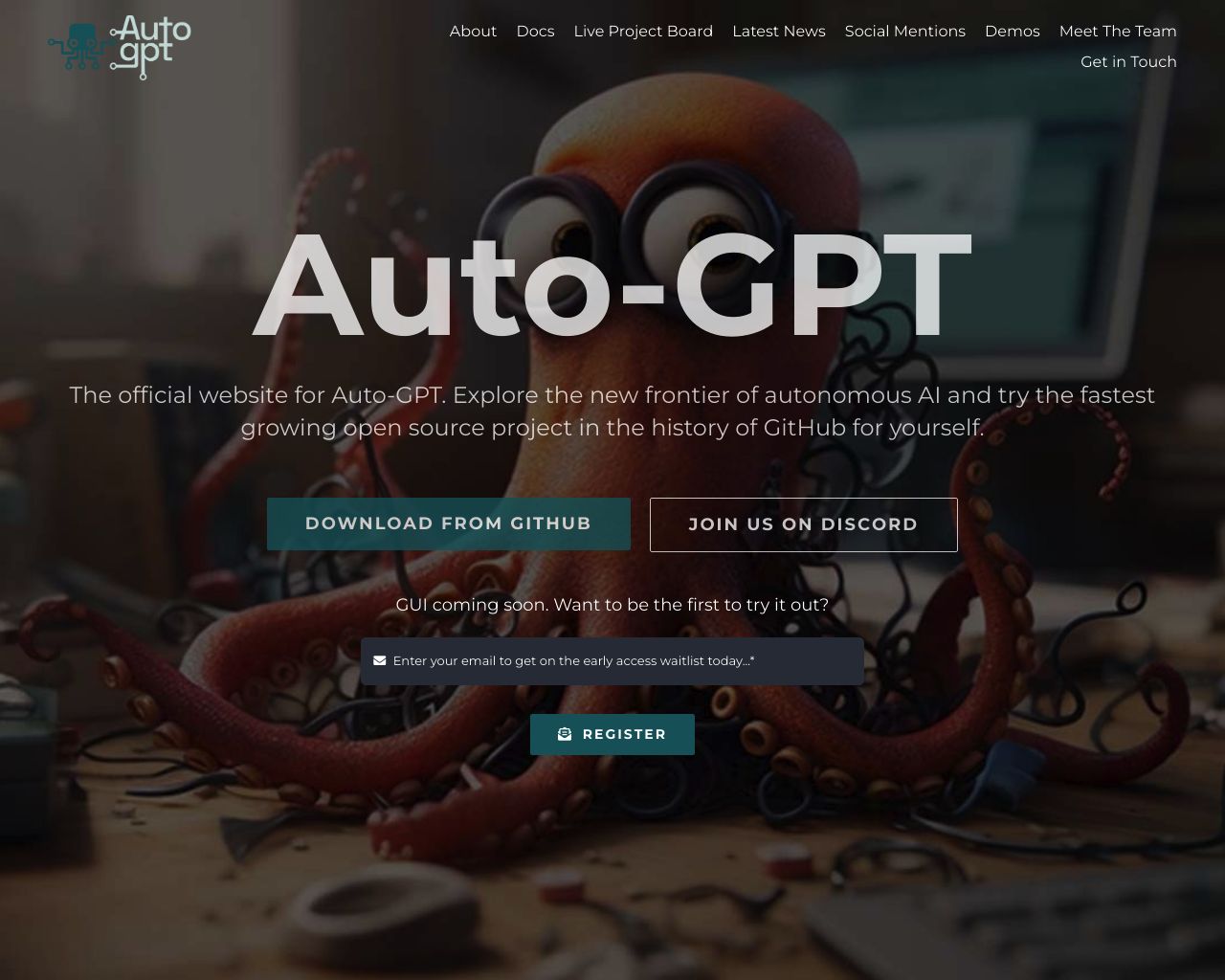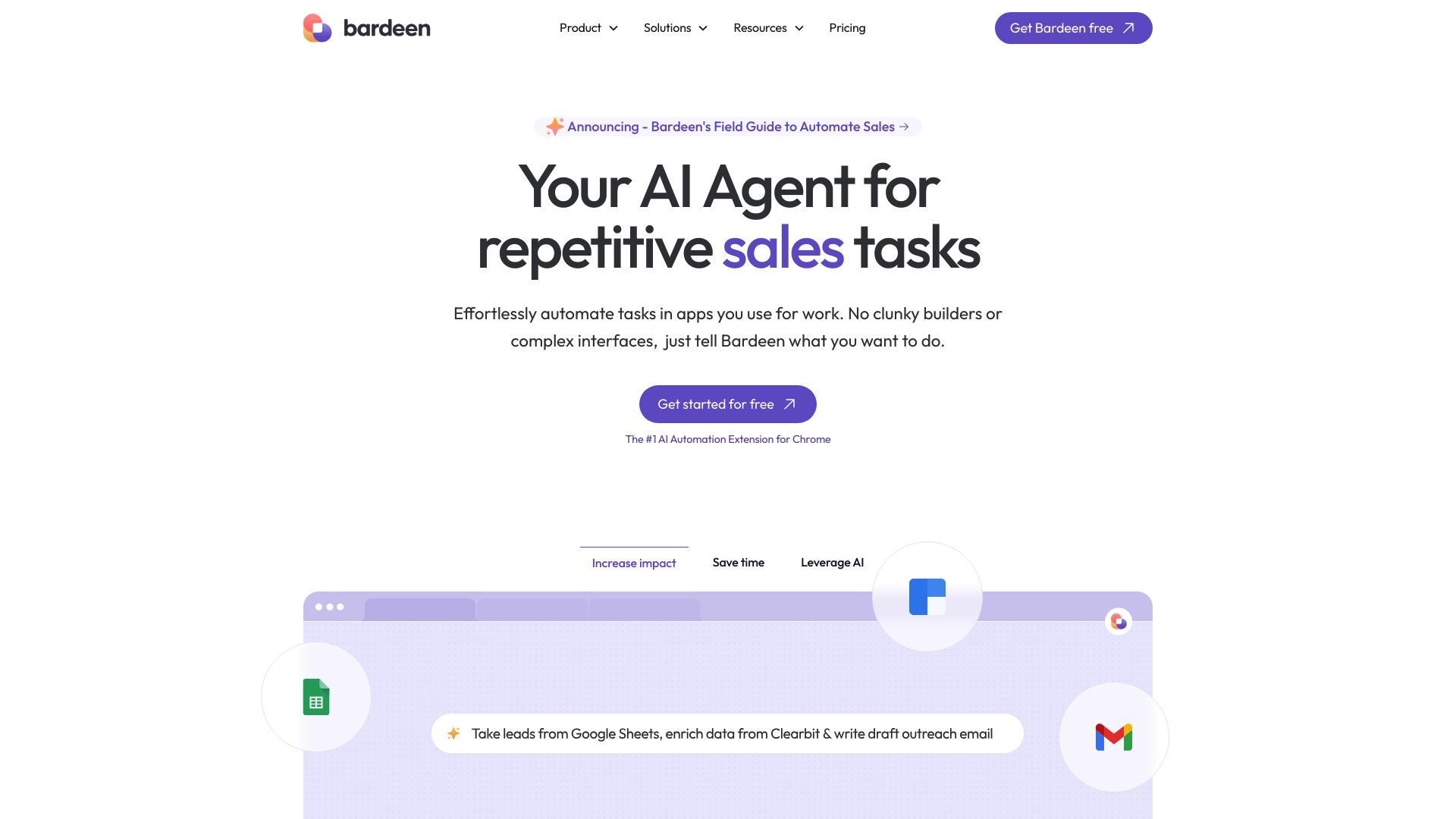AutoGPT vs. Bardeen AI: Choosing the Right AI Platform for Your Business
Artificial intelligence transforms business operations, but choosing the right AI platform can challenge even seasoned professionals. Our comprehensive review examines AutoGPT vs. Bardeen AI, and SmythOS, three leading AI solutions reshaping how organizations automate tasks and solve complex problems.
We compare core capabilities, ease of use, and real-world applications to help you select the ideal AI platform for your needs. Whether you’re a developer seeking powerful APIs, a business leader focused on scalability, or an entrepreneur looking for user-friendly automation, this analysis provides the insights to make an informed decision in today’s competitive AI landscape.
AutoGPT Overview
AutoGPT stands at the forefront of open-source AI agent development. This platform empowers developers to create autonomous AI agents capable of tackling complex tasks with minimal human intervention.


AutoGPT leverages OpenAI’s GPT-4 or GPT-3.5 models, offering advanced language processing capabilities. The platform excels in breaking down large tasks into manageable sub-tasks, showcasing impressive problem-solving skills. Its multimodal functionality allows it to process both text and image inputs, expanding its application across diverse scenarios.
AutoGPT leverages OpenAI’s GPT-4 or GPT-3.5 models, offering advanced language processing capabilities. The platform excels in breaking down large tasks into manageable sub-tasks…
The system’s autonomous operation sets it apart. Once given a goal, AutoGPT can work independently, planning and executing tasks without constant oversight. This feature proves invaluable for applications requiring minimal human intervention, such as automated research or content generation.
Once given a goal, AutoGPT can work independently, planning and executing tasks without constant oversight.
AutoGPT provides robust debugging tools and detailed audit logs, enhancing transparency and facilitating troubleshooting. The platform’s ability to coordinate multiple AI instances for collaborative work on complex projects demonstrates its potential for scalable, team-like operations.
While AutoGPT offers powerful capabilities, it lacks some features found in more comprehensive platforms. It doesn’t provide a visual builder or no-code editor, which may limit accessibility for non-technical users. Additionally, the absence of hosted environments and limited deployment options might pose challenges for enterprise-scale applications.
Bardeen AI Overview
Bardeen AI offers a no-code web automation platform as a Chrome browser extension. The platform empowers users to automate repetitive web-based tasks through pre-built templates and a visual workflow builder, eliminating the need for coding expertise.


Bardeen’s key features include a drag-and-drop workflow builder for creating automations called Playbooks, a library of pre-built actions and triggers for popular apps like Gmail and LinkedIn, and AI-powered capabilities such as text classification and data extraction. The platform leverages models like GPT-3 to enhance its functionality.
Bardeen’s key features include a drag-and-drop workflow builder for creating automations called Playbooks, a library of pre-built actions and triggers … and AI-powered capabilities
One of Bardeen’s strengths lies in its human-in-the-loop interaction approach. Users can actively guide automations, validate data, and provide inputs when needed. This participative automation style allows for more personalized and tailored workflows compared to one-size-fits-all solutions.
However, Bardeen has limitations in certain areas. It lacks capabilities for independent agents, extensive scalability options, and advanced deployment features. The platform also doesn’t offer comprehensive support for multimodal data handling or generalized problem-solving skills beyond pre-defined templates.
Bardeen’s vision centers on democratizing automation by enabling users to build workflows for repetitive tasks without coding expertise. The platform aims to evolve automation from pure efficiency gains to augmenting human capabilities through AI participation. This approach positions Bardeen as a solution for use cases where ongoing user participation is feasible, rather than completely hands-off automation scenarios.
Bardeen’s vision centers on democratizing automation by enabling users to build workflows for repetitive tasks without coding expertise.
Feature Comparison
AutoGPT and Bardeen AI offer distinct approaches to AI-powered automation, with notable differences in their core capabilities and target use cases. AutoGPT excels in autonomous problem-solving and complex task handling, leveraging advanced language models like GPT-4. Its ability to break down large tasks into manageable sub-tasks and coordinate multiple AI instances for collaborative work sets it apart. AutoGPT provides robust debugging tools and detailed audit logs, enhancing transparency and facilitating troubleshooting.
In contrast, Bardeen AI focuses on web-based task automation through a no-code platform. Its strength lies in its visual workflow builder and pre-built templates, making it accessible to users without coding expertise. Bardeen’s approach emphasizes human-in-the-loop interaction, allowing users to guide automations and provide inputs when needed. This participative style enables more personalized workflows compared to fully autonomous solutions.
However, AutoGPT lacks some features that Bardeen AI offers, such as a visual builder and no-code editor. These omissions may limit AutoGPT’s accessibility for non-technical users. Conversely, Bardeen AI falls short in areas where AutoGPT excels, such as autonomous agent capabilities, extensive problem-solving skills, and advanced deployment options. Bardeen’s limited scalability and deployment features may restrict its applicability in enterprise-scale scenarios that AutoGPT can potentially handle.
| AutoGPT | Bardeen AI | SmythOS | |
|---|---|---|---|
| CORE FEATURES | |||
| Hosted Agents (Dev, Production) | ❌ | ✅ | ✅ |
| Visual Builder | ❌ | ✅ | ✅ |
| No-Code Options | ❌ | ✅ | ✅ |
| Memory & Context | ❌ | ❌ | ✅ |
| Autonomous Agents | ✅ | ❌ | ✅ |
| Explainability & Transparency | ❌ | ✅ | ✅ |
| Debug Tools | ❌ | ❌ | ✅ |
| Multimodal | ❌ | ❌ | ✅ |
| Problem-Solving Capabilities | ✅ | ❌ | ✅ |
| Multi-Agent Collaboration | ✅ | ❌ | ✅ |
| Audit Logs for Analytics | ✅ | ❌ | ✅ |
| Work as Team | ❌ | ✅ | ✅ |
| Agent Work Scheduler | ❌ | ✅ | ✅ |
| SECURITY | |||
| Constrained Alignment | ❌ | ❌ | ✅ |
| Data Encryption | ❌ | ✅ | ✅ |
| OAuth | ❌ | ✅ | ✅ |
| IP Control | ❌ | ❌ | ✅ |
| COMPONENTS | |||
| Foundation AIs | ✅ | ❌ | ✅ |
| Huggingface AIs | ❌ | ❌ | ✅ |
| Zapier APIs | ❌ | ❌ | ✅ |
| All other APIs, RPA | ❌ | ✅ | ✅ |
| Classifiers | ❌ | ✅ | ✅ |
| Logic | ❌ | ❌ | ✅ |
| Data Lakes | ❌ | ❌ | ✅ |
| DEPLOYMENT OPTIONS (EMBODIMENTS) | |||
| Deploy as API | ✅ | ❌ | ✅ |
| Deploy as Webhook | ❌ | ❌ | ✅ |
| Staging Domains | ❌ | ❌ | ✅ |
| Production Domains | ✅ | ❌ | ✅ |
| API Authentication (OAuth + Key) | ❌ | ❌ | ✅ |
| Deploy as Site Chat | ❌ | ❌ | ✅ |
| Deploy as Scheduled Agent | ❌ | ✅ | ✅ |
| Deploy as GPT | ✅ | ❌ | ✅ |
| Scalability | ❌ | ✅ | ✅ |
| DATA LAKE SUPPORT | |||
| Hosted Vector Database | ❌ | ❌ | ✅ |
| Sitemap Crawler | ❌ | ❌ | ✅ |
| YouTube Transcript Crawler | ❌ | ✅ | ✅ |
| URL Crawler | ❌ | ❌ | ✅ |
| PDF Support | ❌ | ✅ | ✅ |
| Word File Support | ❌ | ❌ | ✅ |
| TXT File Support | ❌ | ❌ | ✅ |
Best Alternative to AutoGPT and Bardeen AI
SmythOS stands out as the superior alternative to AutoGPT and Bardeen AI for AI automation. Our platform combines powerful autonomous capabilities with an intuitive interface, delivering unmatched versatility and ease of use. SmythOS provides a comprehensive suite of features that cater to diverse use cases, from startups to large enterprises.
SmythOS stands out as the superior alternative to AutoGPT and Bardeen AI for AI automation. Our platform combines powerful autonomous capabilities with an intuitive interface…
Unlike AutoGPT’s limited accessibility and Bardeen AI’s constraints in autonomous functionality, SmythOS offers a visual drag-and-drop builder and no-code options that simplify AI development for users of all skill levels. Our platform’s memory and context capabilities enable more intelligent and context-aware interactions, surpassing both competitors.
SmythOS excels in critical areas like multimodal support, problem-solving capabilities, and multi-agent collaboration. We offer extensive deployment options, including APIs, webhooks, chatbots, and scheduled tasks, providing unparalleled flexibility. Security is paramount, with features like constrained alignment and comprehensive data encryption addressing enterprise-level concerns.
SmythOS excels in critical areas like multimodal support, problem-solving capabilities, and multi-agent collaboration. We offer extensive deployment options…
Our platform supports both easy agent creation for non-technical users and advanced customization for developers. SmythOS enables building truly autonomous agents, unlike Bardeen’s human-guided workflows. We provide hosted environments for development and production, ensuring scalability for growing businesses.
With extensive integrations covering popular AI models, APIs, and data sources, SmythOS adapts to your specific needs. Whether you require no-code simplicity or enterprise-grade AI automation, our powerful, versatile solution delivers unlimited potential for innovation and efficiency gains across your operations.
Conclusion
AutoGPT and Bardeen AI each offer unique approaches to AI-powered automation, but SmythOS emerges as the superior choice for businesses and developers seeking a comprehensive AI solution. AutoGPT excels in autonomous problem-solving and complex task handling, while Bardeen AI focuses on web-based task automation through a no-code platform. However, both platforms have limitations that SmythOS effectively addresses.
SmythOS combines the strengths of AutoGPT and Bardeen AI while offering additional capabilities. Our platform provides a visual builder and no-code editor, making it accessible to both technical and non-technical users. We support multimodal interactions, problem-solving capabilities, and scalable deployment options, surpassing the limitations of AutoGPT and Bardeen AI. SmythOS also offers robust security features, extensive API integrations, and versatile deployment options, including as APIs, webhooks, and chatbots.
For businesses and developers looking to harness the full potential of AI, SmythOS stands out as the most comprehensive and flexible solution. Our platform empowers users to create sophisticated AI agents quickly and efficiently, driving innovation across industries. To experience the power of SmythOS firsthand, create a free account and start building your AI-powered solutions today.
Last updated:
Disclaimer: The information presented in this article is for general informational purposes only and is provided as is. While we strive to keep the content up-to-date and accurate, we make no representations or warranties of any kind, express or implied, about the completeness, accuracy, reliability, suitability, or availability of the information contained in this article.
Any reliance you place on such information is strictly at your own risk. We reserve the right to make additions, deletions, or modifications to the contents of this article at any time without prior notice.
In no event will we be liable for any loss or damage including without limitation, indirect or consequential loss or damage, or any loss or damage whatsoever arising from loss of data, profits, or any other loss not specified herein arising out of, or in connection with, the use of this article.
Despite our best efforts, this article may contain oversights, errors, or omissions. If you notice any inaccuracies or have concerns about the content, please report them through our content feedback form. Your input helps us maintain the quality and reliability of our information.
